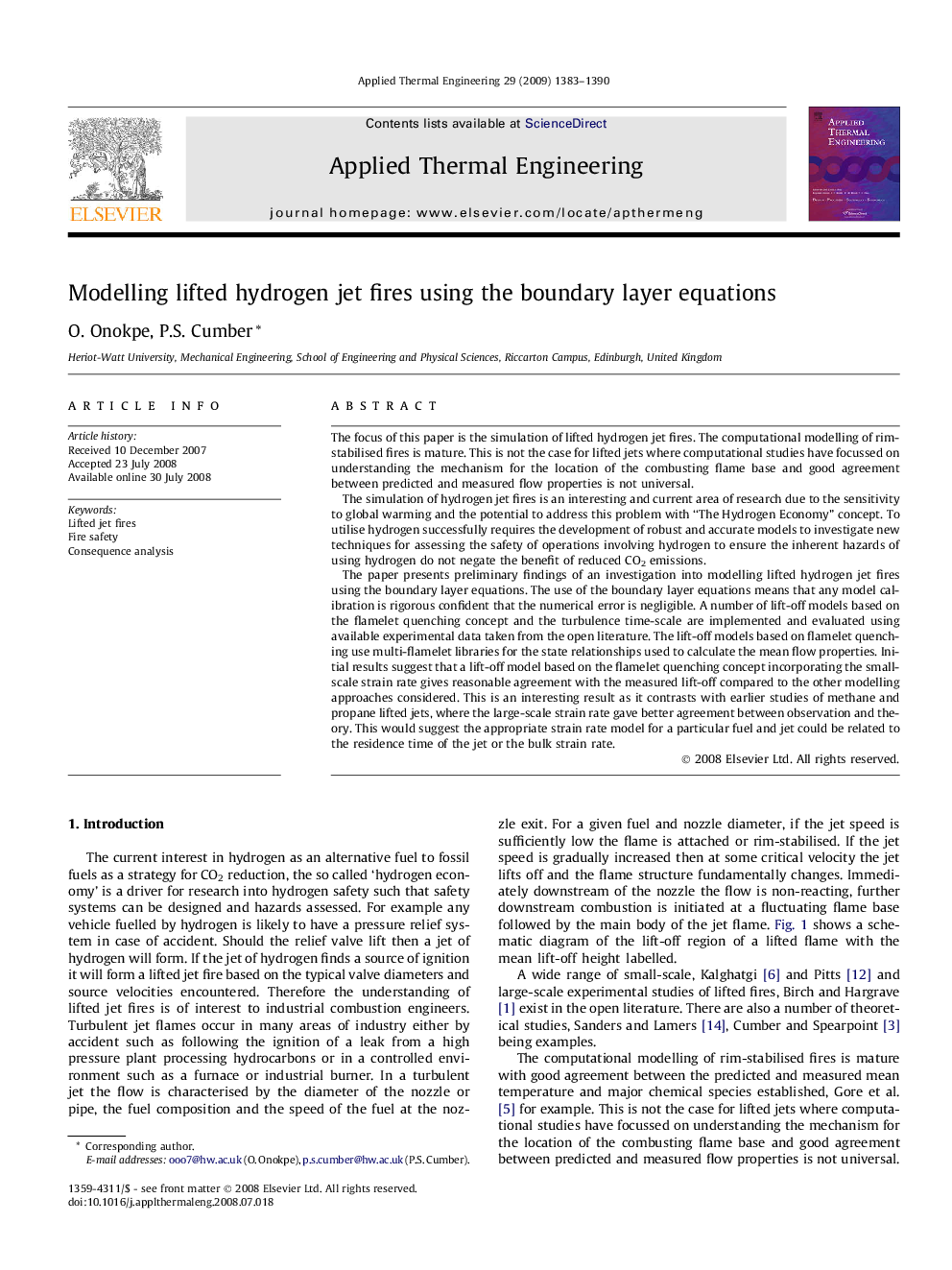| کد مقاله | کد نشریه | سال انتشار | مقاله انگلیسی | نسخه تمام متن |
|---|---|---|---|---|
| 648484 | 884624 | 2009 | 8 صفحه PDF | دانلود رایگان |

The focus of this paper is the simulation of lifted hydrogen jet fires. The computational modelling of rim-stabilised fires is mature. This is not the case for lifted jets where computational studies have focussed on understanding the mechanism for the location of the combusting flame base and good agreement between predicted and measured flow properties is not universal.The simulation of hydrogen jet fires is an interesting and current area of research due to the sensitivity to global warming and the potential to address this problem with “The Hydrogen Economy” concept. To utilise hydrogen successfully requires the development of robust and accurate models to investigate new techniques for assessing the safety of operations involving hydrogen to ensure the inherent hazards of using hydrogen do not negate the benefit of reduced CO2 emissions.The paper presents preliminary findings of an investigation into modelling lifted hydrogen jet fires using the boundary layer equations. The use of the boundary layer equations means that any model calibration is rigorous confident that the numerical error is negligible. A number of lift-off models based on the flamelet quenching concept and the turbulence time-scale are implemented and evaluated using available experimental data taken from the open literature. The lift-off models based on flamelet quenching use multi-flamelet libraries for the state relationships used to calculate the mean flow properties. Initial results suggest that a lift-off model based on the flamelet quenching concept incorporating the small-scale strain rate gives reasonable agreement with the measured lift-off compared to the other modelling approaches considered. This is an interesting result as it contrasts with earlier studies of methane and propane lifted jets, where the large-scale strain rate gave better agreement between observation and theory. This would suggest the appropriate strain rate model for a particular fuel and jet could be related to the residence time of the jet or the bulk strain rate.
Journal: Applied Thermal Engineering - Volume 29, Issue 7, May 2009, Pages 1383–1390